Spatial Light Modulators (SLMs) are versatile optical devices capable of dynamically modulating the phase, amplitude, or polarization of light waves across a two-dimensional plane. Unlike traditional fixed optics, SLMs offer programmable, pixel-level control over the wavefront, making them invaluable for a broad range of advanced optical applications. While deformable mirrors (DMs) have long been the standard for wavefront correction, offering high-speed mechanical adjustments via physically deformable surfaces, SLMs provide a complementary approach with advantages in spatial resolution, flexibility, and ease of integration, especially in complex wavefront shaping tasks.
In this blog, we explore the capabilities of the Holoeye SLM model ERIS-1.1 for adaptive aberration control. Using the intuitive Holoeye software, we input known aberration patterns into the SLM and measure the resulting wavefront distortions with the high-precision LIFT wavefront sensor. This approach allows us to quantitatively evaluate the SLM’s performance in compensating for optical aberrations, which is crucial for applications ranging from high-resolution microscopy and laser material processing to astronomical imaging. By demonstrating how dynamic wavefront correction with an SLM can restore image fidelity and system performance, we highlight its growing significance in the evolving landscape of optical technology.
Required Configuration for SLM-Based Aberration Testing
- We built a high-precision optical system based on a 4f imaging conjugation setup to enable accurate imaging and analysis of wavefront aberrations. The system incorporates a high-accuracy Imagine Optic wavefront sensor, allowing us to capture fine phase distortions across the optical field. This setup provides a reliable platform for testing wavefront behavior and serves as a foundation for applications such as aberration correction, beam shaping, and adaptive optics. Optical system presented on the figures below:


Figure 1: Linearly polarized light propagates through a 4f conjugate imaging system for aberration detection and characterization
Quantifying SLM Flatness: Reference Measurement for Aberration Experiments
Spatial Light Modulators (SLMs) control the phase or amplitude of light on a pixel-by-pixel basis, making them highly versatile components in advanced optical systems. However, for many high-precision applications, it’s not only the modulation capability that matters, the intrinsic flatness of the SLM surface is equally crucial. A key metric for any wavefront modulator is its “best flat” value, which reflects the precision and quality of wavefront control the device can achieve. Typically, if the best flat error is below λ/20 rms, the component can be considered sufficiently accurate to avoid degrading the overall optical system’s performance.
Holoeye SLMs are carefully calibrated in-house, with the manufacturer providing a calibration file that we use in our testing. An SLM that can produce a uniformly flat wavefront, either through its physical surface quality or via digital compensation, enables highly accurate and reliable phase modulation essential for high-fidelity optical control.
For the measurement below, we used our double-pass tool in WaveView software, where the SLM is considered a reflective element. As a result, the wavefront generated by the SLM always exhibits a phase shift or amplitude change that is half of the applied shape.

Figure 2: Wavefront map obtained with the SLM performing at its best flat.
With a residual wavefront error of only 19 nm RMS across a 8.5mm aperture, the SLM demonstrates near-flat performance, enabling high-precision phase modulation for advanced optical applications such as high-resolution microscopy, optical trapping, adaptive optics in astronomy, wavefront correction in retinal imaging, laser beam shaping. For comparison, a membrane based deformable mirror like uDM typically has a “best flat” better than 10 nm rms.
Evaluating SLM Response to Diverse Aberrations and Beam Shapes
Starting from a perfectly flat wavefront, we introduced various types of optical aberrations individually using the SLM. Each aberration appeared distinct and well-isolated, as clearly seen in the Modal list next to the Wavefront map in WaveView, where coefficients calculated using Zernike polynomial reconstruction with RMS normalization revealed a dominant value for the introduced mode, while others remained minimal. Furthermore, the linearity of the SLM was confirmed: when the amplitude of a given aberration was doubled on the SLM, the measured response on the sensor reflected exactly twice the initial value. This demonstrates the high precision, linearity, and selective control offered by the SLM in beam manipulation
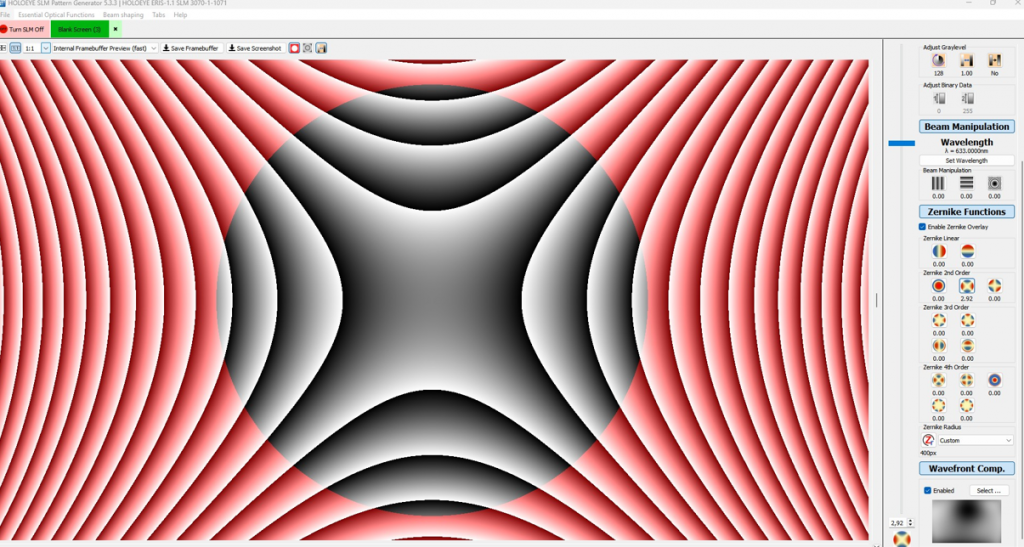
Figure 3: Holoeye software. It offers a rich suite of tools for controlling various beam aberrations and shaping the wavefront, including the ability to generate specialized beam profiles such as vortex beams, top-hat beams, and many other custom beam functions.
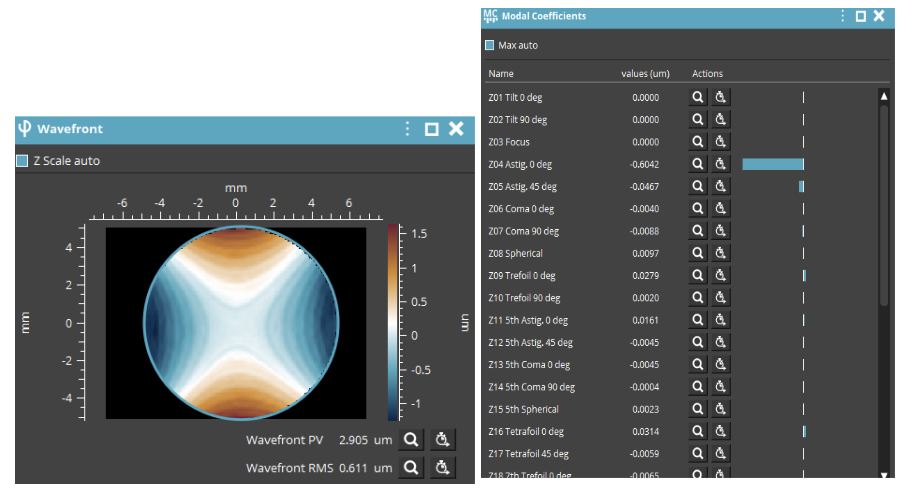
Figure 4: Wavefront map obtained with the SLM performing 0° of astigmatism
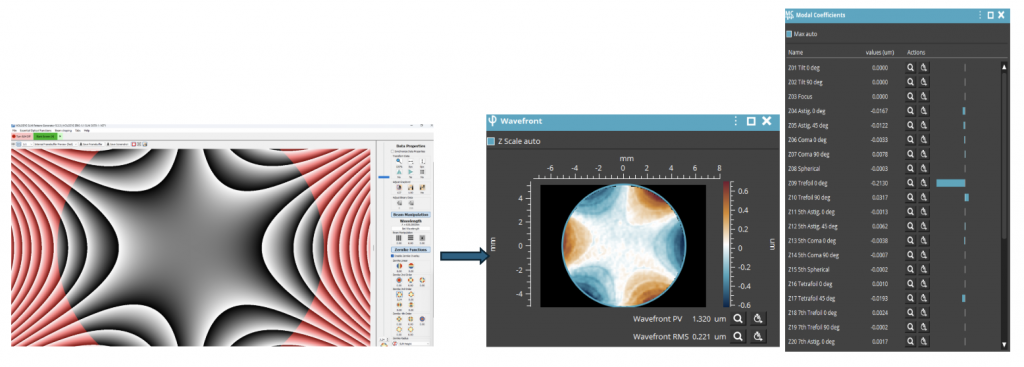
Figure 5: Wavefront map obtained with the SLM performing 0° of trefoil

Figure 6: Wavefront map obtained with the SLM performing 0° coma
Characterizing SLM Performance in Vortex Beam Generation and Shaping
Unlike deformable mirrors, which operate through continuous surface deformation, Spatial Light Modulators (SLMs) offer discrete, pixel-level phase control. This key difference allows SLMs to generate complex phase patterns such as optical Vortex Beams, which carry orbital angular momentum (OAM).
The successful generation of vortex beams using an SLM clearly demonstrates its fine phase control and beam shaping capabilities. These beams require precise azimuthal phase modulation (e.g., a helical phase ramp), which SLMs can implement accurately due to their high spatial resolution and programmable nature.
In this test, various topological charges are introduced into the beam, and the resulting phase profiles are measured using a wavefront sensor. A peak-to-valley phase difference of exactly l·λ around the vortex confirms a continuous and uniform phase variation across the full 2π angular span.
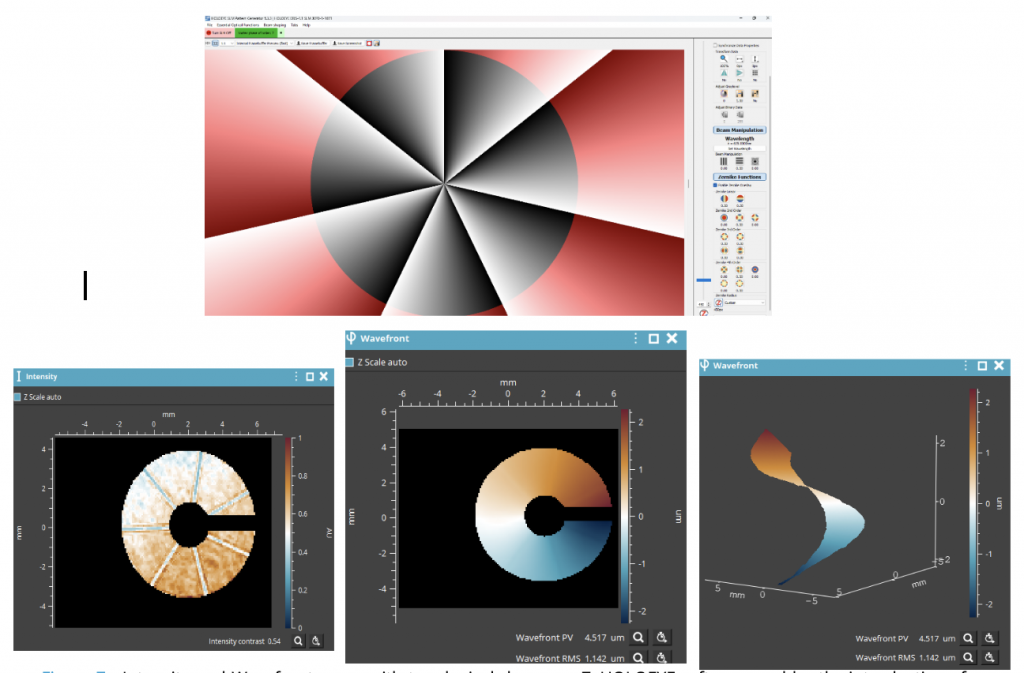
Figure 7: Intensity and Wavefront maps with topological charge m=7. HOLOEYE software enables the introduction of high topological charges, while our high-accuracy wavefront sensor allows for their precise detection.
Vortex beam with topological charge m=7 . PV/λ= 4,517μm/675nm= 7 , as expected.
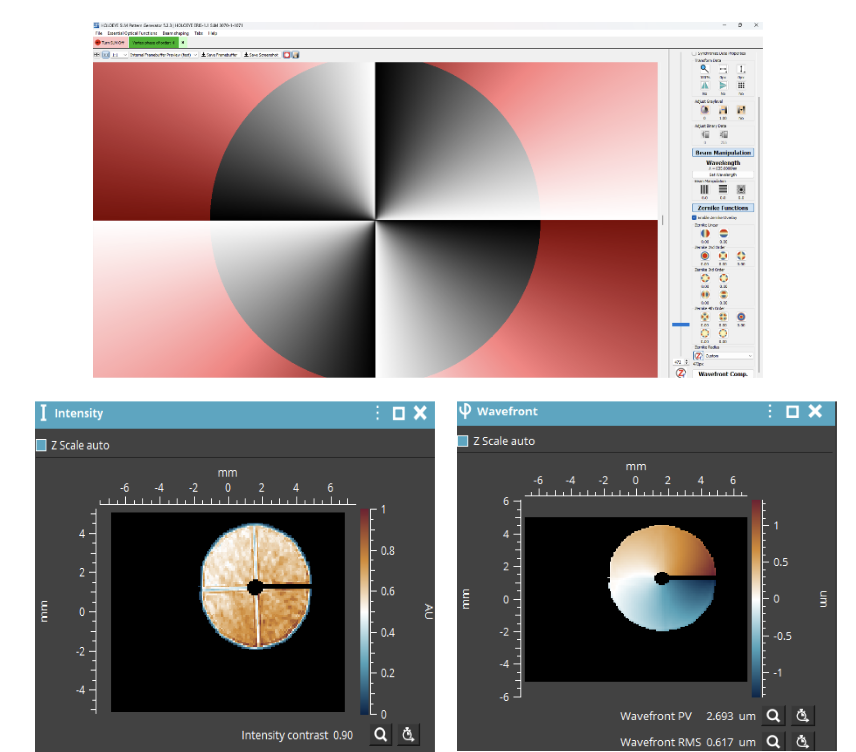
Figure 8: Intensity and Wavefront maps with topological charge m=4
Vortex beam with topological charge m=4 . PV/λ= 2,693μm/675nm= 4, as expected.
From Validation to Application: The Road Ahead
The results presented in this test confirm the high precision and reliability of the Spatial Light Modulator (SLM) in performing accurate and selective wavefront control. The SLM demonstrated excellent linearity, stability, and a very low cross-talk across a range of introduced aberrations and beam shapes, including vortex beams. These capabilities validate its suitability for high-performance optical applications requiring dynamic phase modulation. Building on these findings, our next step (future blog post) will be to integrate the SLM as a corrective element in a closed-loop adaptive optics system.
To learn more about Spatial Light Modulators, click here.
To learn more about Wavefront Sensors, click here.
